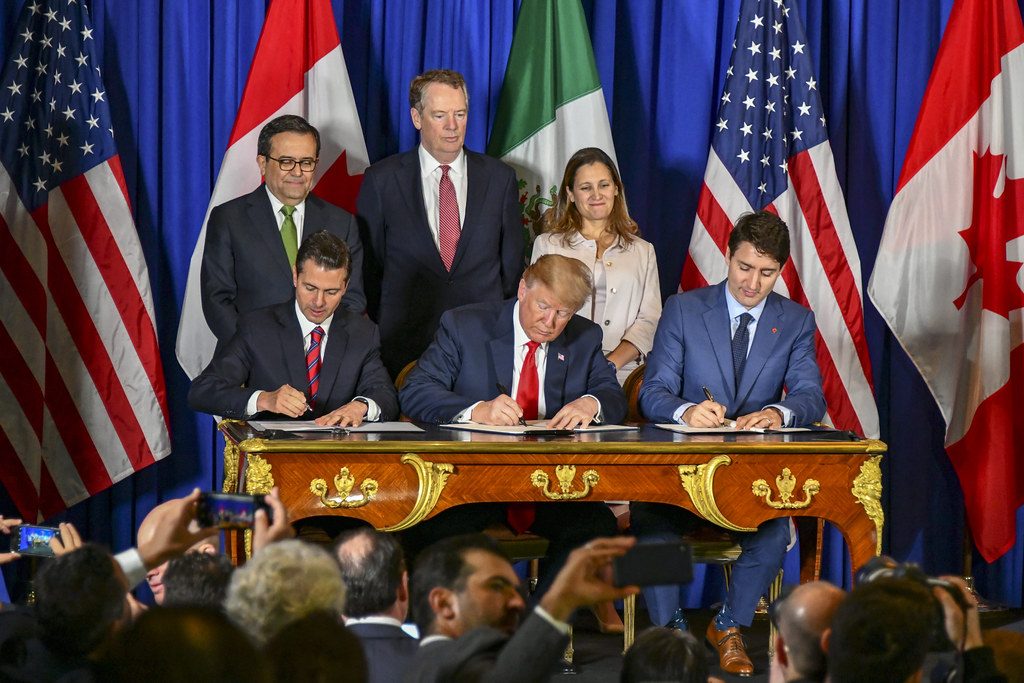Washington, DC — Among the many policy issues competing for attention is the future of America’s trade deals. From ratifying USMCA to escalating Chinese tariffs, the haze of uncertainty surrounding trade undermines industries across the country. Freight railroads, which service nearly every industrial, agricultural, retail and resource-based sector of the economy, are a prime example.

It can be difficult to keep up with America’s changing trade landscape. We’ve provided a road map on the USMCA below—from NAFTA’s accomplishments to the new deal’s ratification process.
What did NAFTA do? Since its inception in 1993, NAFTA has opened new markets and catalyzed enormous economic growth by lowering trade barriers between the U.S., Canada and Mexico. More than 12 million U.S. jobs depend on NAFTA. In 2017, trade with Canada and Mexico reached nearly $1.3 trillion, quadrupling in the last 25 years. Today, the two countries buy more than one-third of U.S. merchandise exports.
As a reminder, rail + trade go hand-in-hand: Rail has deep ties with international trade. A hefty 42% of rail traffic and approximately 50,000 domestic rail jobs worth over $5.5 billion in annual wages and benefits depend on trade.
What’s in this deal and how does it differ from NAFTA? The USMCA is essentially NAFTA 2.0—a deal that builds on the strengths of the previous deal but modernizes it for today’s commercial landscape. For example, it includes essential provisions related to e-commerce and digital trade, which were in their infancy when the original deal was struck but now help drive the economy and intermodal rail shipments — one of the most important parts of the rail business. Here are 10 more benefits of the USMCA, including the expansion of exports, more domestic auto production, and reduced outsourcing.
How’s it going to impact the economy? This spring, policymakers received a long-awaited economic analysis of the USMCA. The U.S. International Trade Commission found that the new trade agreement would add 0.35%, or $68 billion, to U.S. GDP if implemented. It would also provide long-term policy certainty for U.S. businesses, encouraging investment and growth.
Why does certainty matter? When manufacturers aren’t sure about the future of their supply chains, it means they can’t forecast and plan, which ripples into adjacent industries. For railroads, uncertainty makes it increasingly difficult to properly plan future business decisions, such as the allocation of rail cars, personnel and equipment.
When will USMCA take effect? Not so fast. Although all three countries have signed the deal, they must each still ratify it. Mexico became the first country to clear this hurdle when its Senate passed the USMCA by a wide margin on June 20. The United States is likely the biggest impediment to the USMCA, as the Trump Administration continues to negotiate with Congress over certain points, including enforcement, labor and environmental provisions.
What’s the timeline for Congressional action? It depends on who you’re talking to. The Administration is hoping to get it passed before the August recess. Congressional leaders, however, continue to push for provisions they believe will strengthen the deal.
Bottom line: Federal lawmakers will decide whether or not to ratify the deal over the next several months—and we ask that you weigh in with them to show your support. The USMCA Coalition will hold a #USMCAnow social media day on Wednesday, July 10—tweet your support and tag your members of Congress!
If you’d like to read more about freight rail’s official USMCA stance, visit AAR.org.


